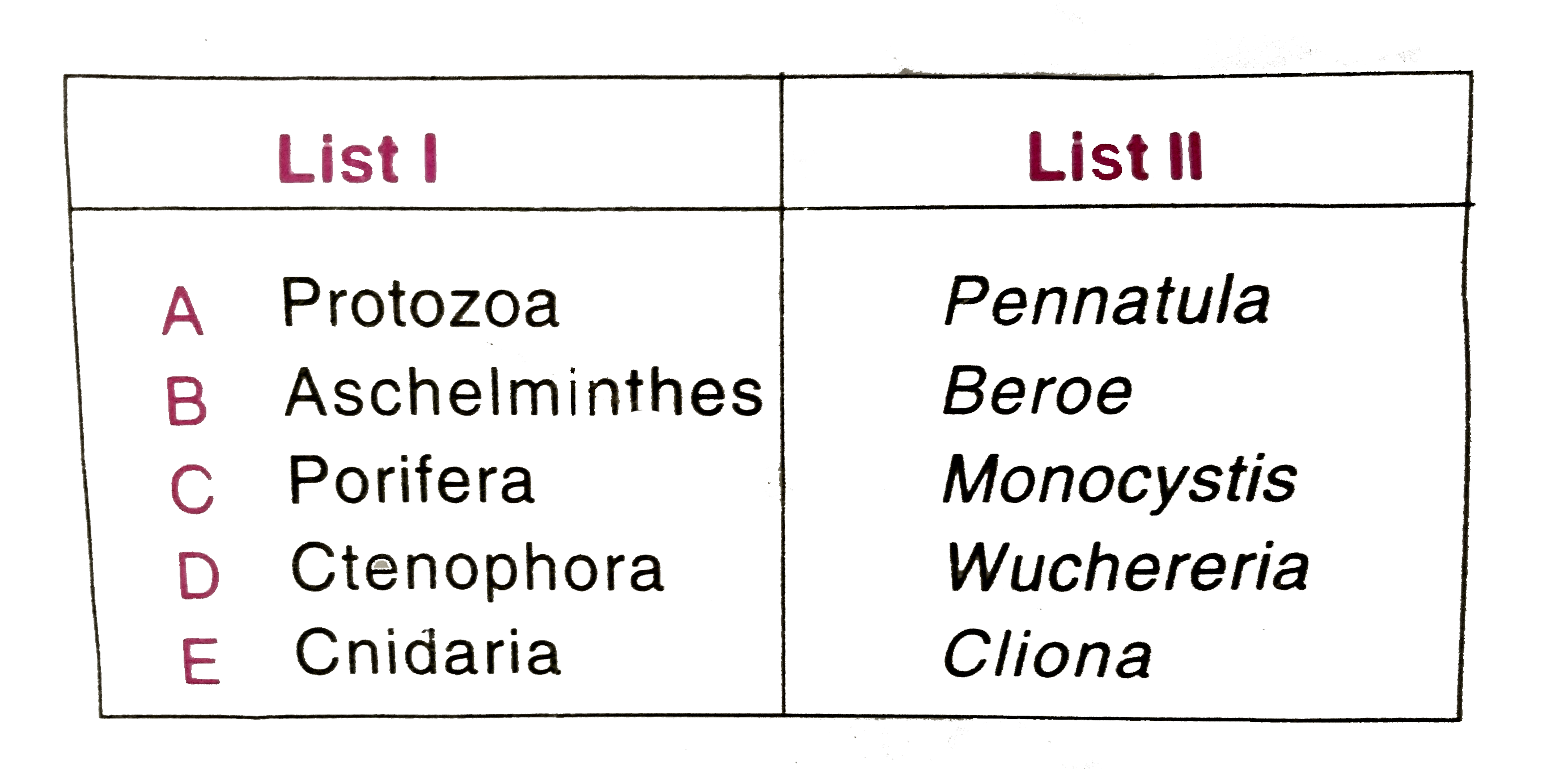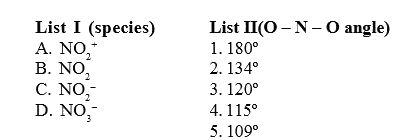Match list I with list II and select the correct option.
List IList IIA.GemmulesI.AgaveB.Leaf-budsII.PenicilliumC.BulbilIII.Water hyacinthD.OffsetIV.SpongesE.ConidiaV.Bryophyllum
A-IV, B-V, C-I, D-III, E-II
A-IV, B-III, C-II, D-I, E-V
A-III, B-V, C-IV, D-II, E-I
A-IV, B-I, C-V, D-III, E-II
The correct Answer is:A
To solve the question of matching List I with List II, we will analyze each item in List I and determine which corresponding item in List II it matches with based on their relationships as asexual propagules and the organisms that produce them.
1. Identify the first item in List I: Gemmules (A)
- Gemmules are a type of asexual reproductive structure found in sponges.
- Match: A (Gemmules) → IV (Sponges)
2. Identify the second item in List I: Leaf-buds (B)
- Leaf-buds are asexual propagules found in Bryophyllum, which can reproduce vegetatively through its leaves.
- Match: B (Leaf-buds) → V (Bryophyllum)
3. Identify the third item in List I: Bulbil (C)
- Bulbils are a type of asexual propagule found in Agave, which can reproduce through these structures.
- Match: C (Bulbil) → I (Agave)
4. Identify the fourth item in List I: Offset (D)
- Offsets are a form of asexual reproduction found in Water Hyacinth, where new plants grow from the parent plant.
- Match: D (Offset) → III (Water Hyacinth)
5. Identify the fifth item in List I: Conidia (E)
- Conidia are asexual spores produced by fungi, specifically associated with Penicillium.
- Match: E (Conidia) → II (Penicillium)
Summary of Matches:
- A → IV (Gemmules → Sponges)
- B → V (Leaf-buds → Bryophyllum)
- C → I (Bulbil → Agave)
- D → III (Offset → Water Hyacinth)
- E → II (Conidia → Penicillium)
Final Matching:
- A: IV
- B: V
- C: I
- D: III
- E: II
Correct Option:
Upon reviewing the options, the correct matching corresponds to the first option provided in the question.
---
- Gemmules are a type of asexual reproductive structure found in sponges.
- Match: A (Gemmules) → IV (Sponges)
- Leaf-buds are asexual propagules found in Bryophyllum, which can reproduce vegetatively through its leaves.
- Match: B (Leaf-buds) → V (Bryophyllum)
- Bulbils are a type of asexual propagule found in Agave, which can reproduce through these structures.
- Match: C (Bulbil) → I (Agave)
- Offsets are a form of asexual reproduction found in Water Hyacinth, where new plants grow from the parent plant.
- Match: D (Offset) → III (Water Hyacinth)
- Conidia are asexual spores produced by fungi, specifically associated with Penicillium.
- Match: E (Conidia) → II (Penicillium)
- A → IV (Gemmules → Sponges)
- B → V (Leaf-buds → Bryophyllum)
- C → I (Bulbil → Agave)
- D → III (Offset → Water Hyacinth)
- E → II (Conidia → Penicillium)
- A: IV
- B: V
- C: I
- D: III
- E: II
Upon reviewing the options, the correct matching corresponds to the first option provided in the question.
Similar Questions
Knowledge Check
- Question 1 - Select One
Match list I with list II and select the correct option
List IList IIA.Germmules1.AgaveB.Leaf-buds2.PenicilliumC.Bulbil3.Water hyacinthD.Offset4.SpongesE.Conidia5.Bryophyllum.AA-4,B-5,C-1,D-3,E-2BA-4,B-3,C-2,D-1,E-5CA-3,B-5,C-4,D-2,E-1DA-4,B-1,C-5,D-3,E-2 - Question 2 - Select One
Match list I with list II and choose the correct option:
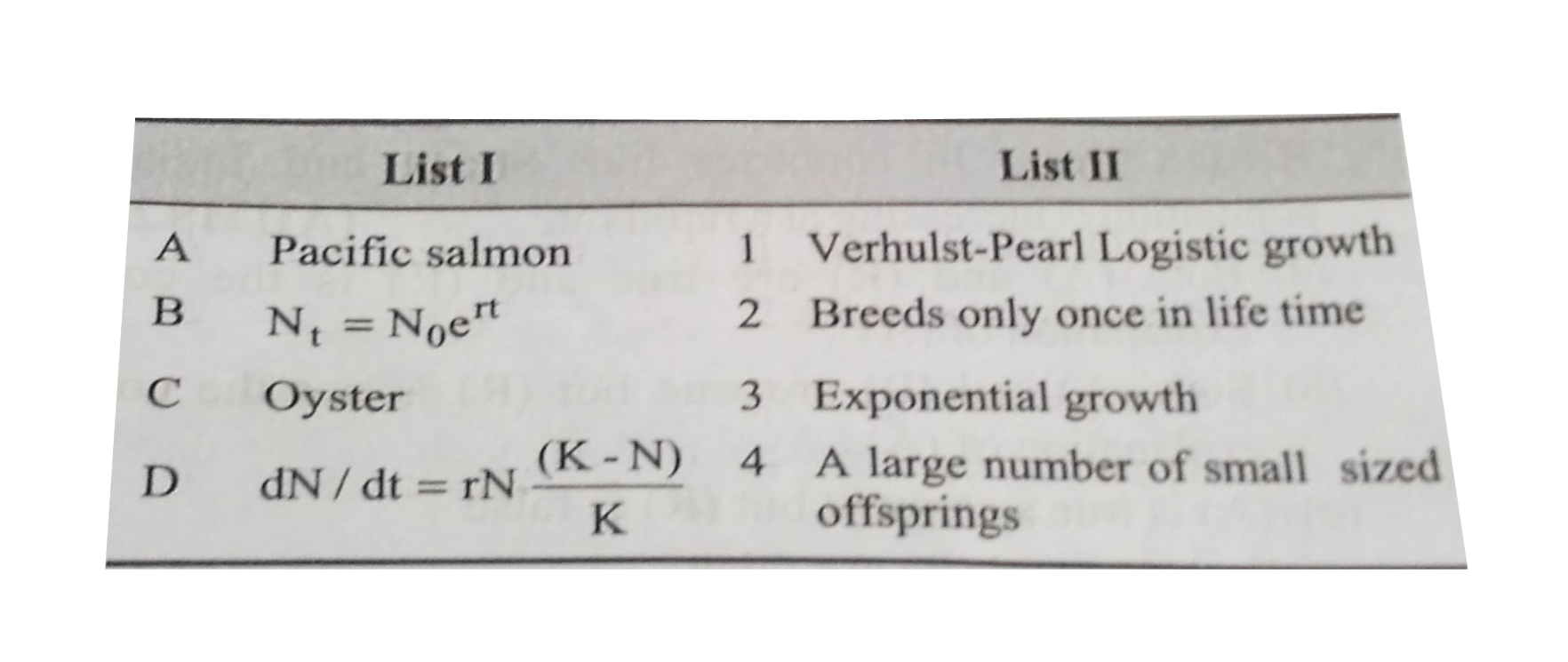 AA-4, B-3, C-1, D-2BA-3, B-4, C-1, D-2CA-3, B-1, C-4, D-2DA-2, B-3, C-4, D-1
AA-4, B-3, C-1, D-2BA-3, B-4, C-1, D-2CA-3, B-1, C-4, D-2DA-2, B-3, C-4, D-1 - Question 3 - Select One
Match List I and List II and select the correct option
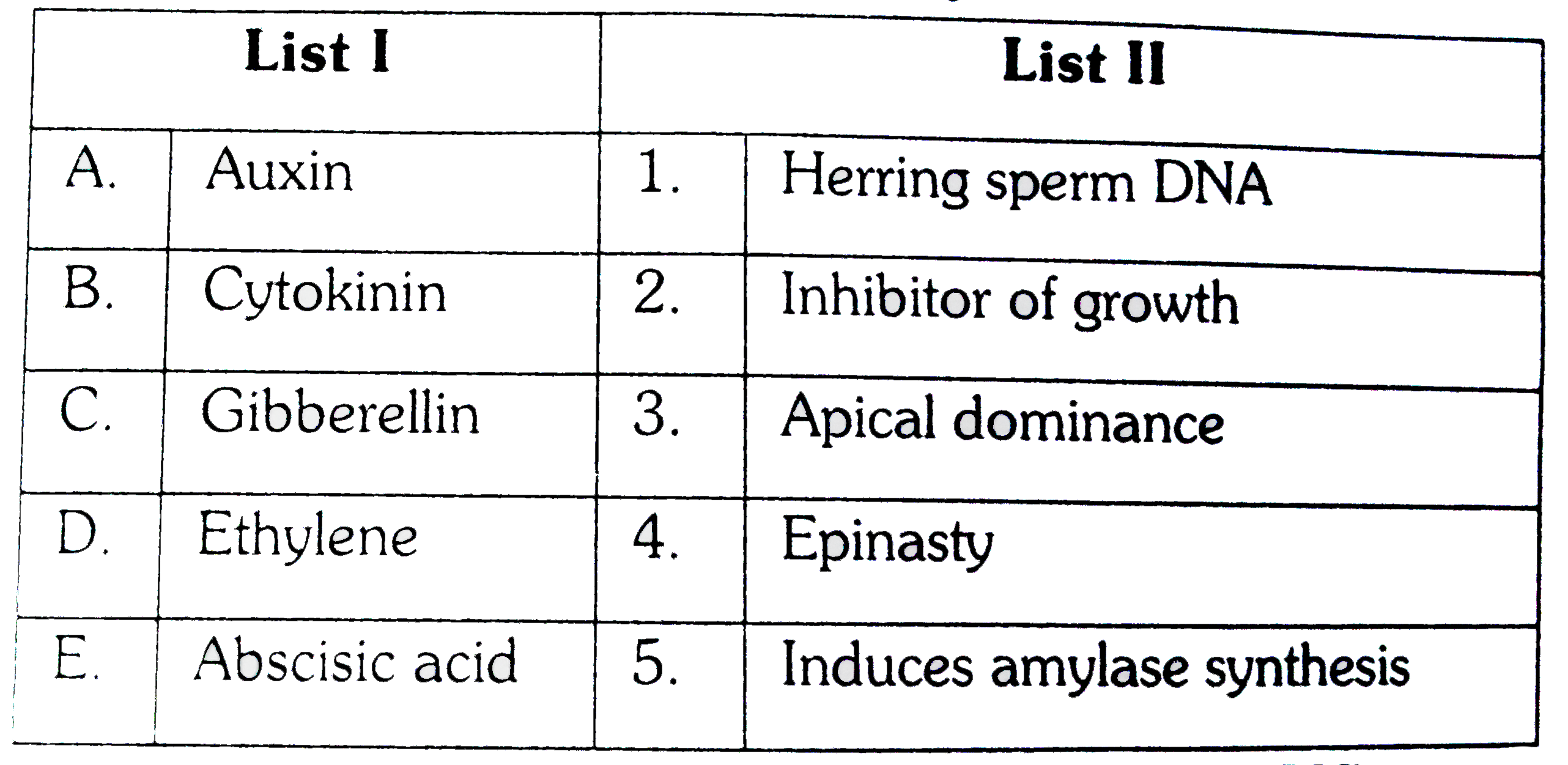 AA−3,B−1,C−5,D−2BA−4,B−5,C−1,D−3,E−2CA−2,B−1,C−5,D−3,E−4DA−3,B−1,C−5,D−2,E−4
AA−3,B−1,C−5,D−2BA−4,B−5,C−1,D−3,E−2CA−2,B−1,C−5,D−3,E−4DA−3,B−1,C−5,D−2,E−4
Match List I with List II and select the correct answer
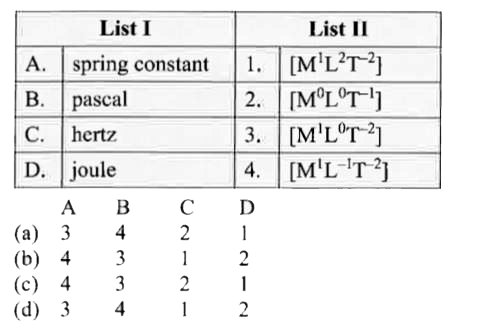 View Solution
View SolutionMatch list I with list II and select the correct answer :
 View Solution
View SolutionMatch list I with list II and select the correct answer :
 View Solution
View SolutionMatch List-I and List -II and select the correct option
 View Solution
View SolutionMatch list I with II and select the correct answer :
 View Solution
View Solution


